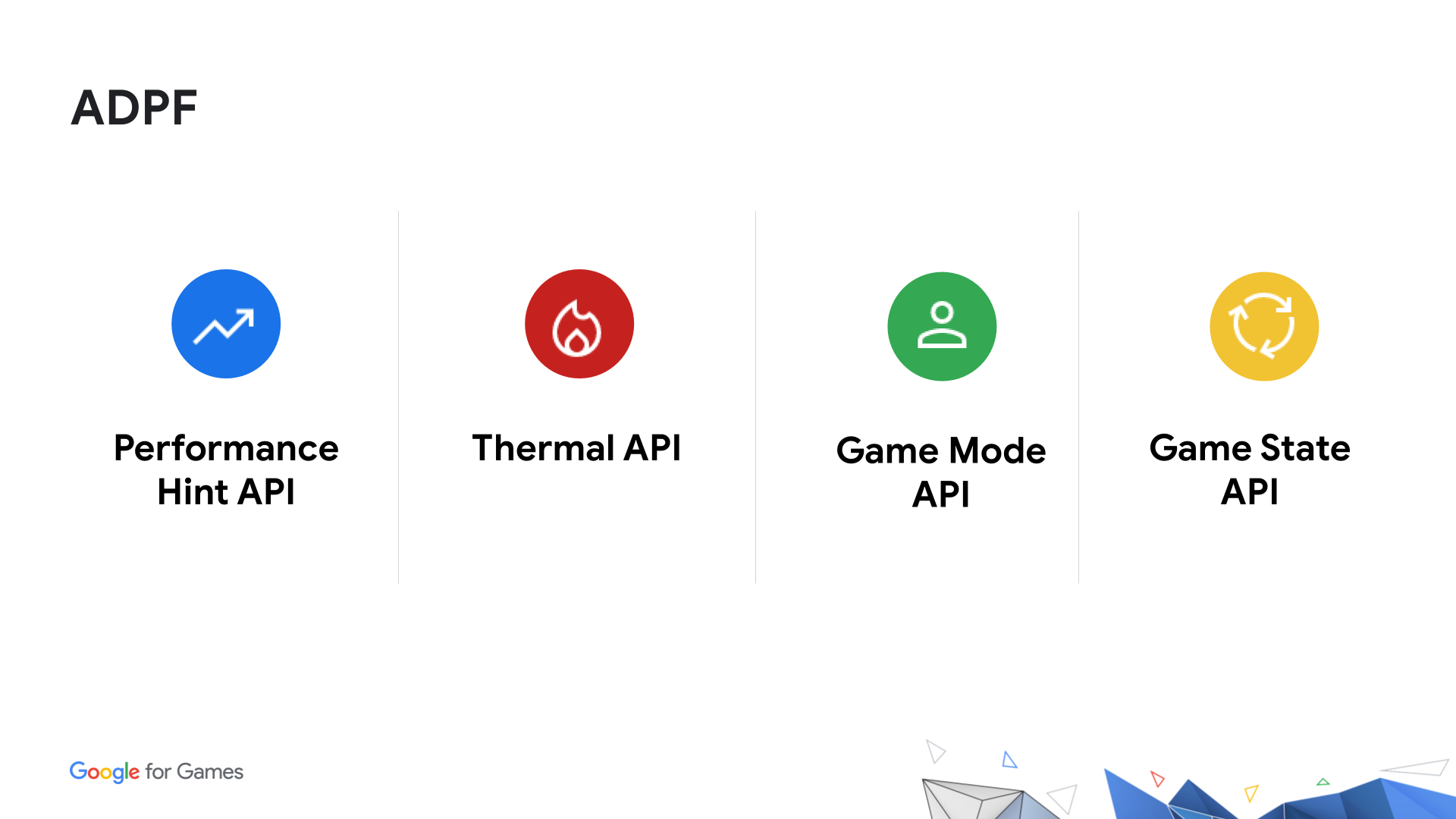Przykładowa aplikacja
Przykładowa aplikacja ADPF demonstruje podstawowe użycie interfejsu ADPF API.

Przykładowy kod wyświetla stan termiczny urządzenia za pomocą interfejsu ADPF
getThermalHeadroom
API i interfejsu thermal status
API. Aplikacja dynamicznie zmienia też obciążenie na podstawie marginesu temperaturowego oraz interfejsu Performance Hint Manager API, aby kontrolować wydajność wątku renderowania.
Ćwiczenia z programowania
W tym kursie Codelab Integrating Adaptability Features Into Your C++ Game znajdziesz proste instrukcje, które pomogą Ci zintegrować funkcje adaptacyjne z Twoją grą. Po zakończeniu tego warsztatu będziesz mieć za sobą integrację tych funkcji i lepiej poznasz ich działanie:
- Thermal API: odczytuje stan termiczny urządzenia i zareaguje, zanim urządzenie wejdzie w stan ograniczenia termicznego.
- Interfejs API trybu gry: poznaj preferencje optymalizacji gracza (maksymalizacja wydajności lub oszczędzanie baterii) i odpowiednio dostosuj ustawienia.
- Game State API: informuje system o stanie gry (wczytywanie, rozgrywka, interfejs użytkownika itp.), dzięki czemu system może odpowiednio dostosować zasoby (przyspieszyć operacje wejścia/wyjścia lub procesor, procesor graficzny itp.).
- Interfejs Performance Hint API: podaj systemowi informacje o modelu wątkowania i obciążeniu, aby mógł odpowiednio przydzielić zasoby.

Historie programistów
W tych historiach sukcesu deweloperów możesz się dowiedzieć, jak deweloperzy gier zwiększyli stabilność liczby klatek na sekundę i zoptymalizowali zużycie energii dzięki interfejsom API Adaptability.
- Kakao Games zwiększyła stabilność liczby klatek na sekundę do 96% dzięki funkcji Android Adaptability
- Gameloft zmniejsza zużycie energii przez urządzenie o 70%, co przekłada się na wydłużenie czasu gry o 35% dzięki interfejsowi Game Mode API
- Aktualizacja Android Game Development Kit (AGDK): funkcje dostosowywania i zwiększania wydajności
- GDC Vault – edycja Google Developer Summit: poprawa wydajności gier dzięki dynamicznemu frameworkowi wydajności Androida
- MediaTek zwiększa dynamikę działania procesorów SoC na Androida
- NCSoft Lineage W zapewnia większą wydajność i zapobiega przegrzewaniu się urządzenia dzięki ADPF
- Pierwsze kroki z Android Dynamic Performance Framework (ADPF) w Unreal Engine
- Netmarble Games: optymalizacja skuteczności za pomocą ADPF

